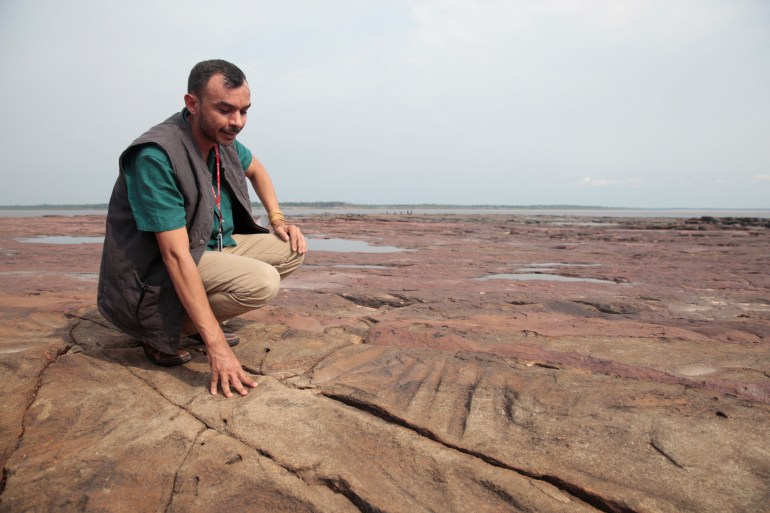
New report says climate change is responsible for draining rivers, having devastating impacts on biodiversity and communities.
climate change and not The youngwas the main reason for last year’s unprecedented drought Amazon rainforest This caused rivers to dry up, necessitated deliveries of essential supplies to riverine communities and led to the deaths of endangered dolphins, scientists say.
A report The findings released Wednesday by World Weather Attribution, an international network of scientists, showed that human-caused global warming was draining waterways in the world’s largest rainforest, killing hundreds of endangered dolphins and isolating millions of people relying on them for food and transportation the region’s waterways depend on and income.
Scientists studied the events from June to November last year and found that global warming caused by the burning of fossil fuels increased the chances of drought by 30 times and led to extreme temperatures that caused water levels to rise has fallen to its lowest level since records began.
The impact of climate change on the region is twofold: it reduces rainfall, but it also leads to hotter conditions that cause moisture to evaporate from plants and soils, increasing the severity of drought.
While both climate change and El Nino contributed about equally to a decrease in precipitation, the study found higher global temperatures are the main reason for the drought.
All nine Amazon rainforest countries – including BrazilColombia, Venezuela and Peru – have been hit by drought, which is expected to worsen after the rainy season ends in May.
fight to survive
The drought had a devastating impact on people’s lives, forcing many people to travel long distances to access food, medicine and other essential supplies. They pulled boats across parched stretches of the Amazon, said Simphiwe Stewart, a researcher at the Dutch Red Cross and Red Crescent Climate Center and co-author of the study.
Along the Amazon, people watched their crops wither and fish disappear. With travel impossible due to the low river, they form long lines on the river banks to receive relief supplies, the report said.
In Manaus, the region’s largest city, more than two million residents suffocated from wildfire smoke for months.
Researchers in Brazil said low water levels killed at least 178 of the Amazon’s critically endangered pink and gray river dolphins last year. Thousands of fish have died due to lack of oxygen in the tributaries.
Point of no return
The report comes after the planet experienced its hottest year on record.
The Amazon is considered crucial to combating climate change because its trees absorb large amounts of greenhouse gases.
“We should really be concerned about the health of the Amazon forest,” said Regina Rodrigues, a researcher at the Federal University of Santa Catarina in Brazil who co-authored the report.
Rodrigues noted that while the region has faced at least three other severe droughts in the past 20 years, the scale of this drought was unprecedented and affected the entire Amazon basin.
In Brazil, a major Amazon tributary fell to its lowest level since records began in 1902, with smaller streams virtually disappearing.
Researchers said the drought could worsen wildfires, which, combined with climate change and deforestation, could more quickly push the Amazon to a point of no return where the biome dries up and is no longer a lush rainforest.

“What is now about a one-in-50-year event would have been much less likely at a temperature of 1.2 degrees [C] cooler world. As we continue to warm the climate, this combination of low rainfall and high temperatures will become even more common,” said study co-author Friederike Otto, a climate scientist at Imperial College of London.
The planet is closer than ever to rising 1.5 degrees Celsius (2.7 degrees Fahrenheit) since pre-industrial times, and nations had hoped to maintain that level to avoid the worst impacts of climate change, such as deadly heat, rising sea levels, flooding and To avoid forest fires.






Recent Comments